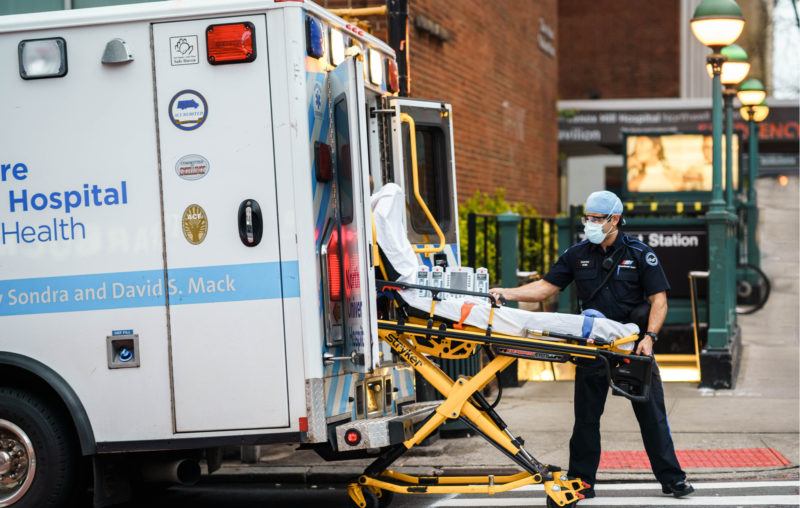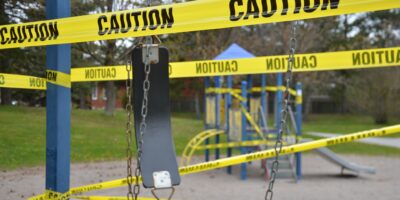Was Governor Cuomo Responsible for the Death of Thousands of Nursing Home Inhabitants?

The 56th Governor of New York, Andrew Cuomo, had the grave misfortune of presiding over one of the states hit hardest by COVID-19. According to a recent poll the governor has enjoyed a sky-high approval rating due to his leadership during the ongoing crisis.
Prior to the pandemic, he was polling at a dismal 3/10 favorable rating whereas now he is seen as one of the most liked politicians in the country with a new rating of 7/10. Some people like his brother and CNN anchor Chris Cuomo even asked if he was considering running for president because of his new popularity.
However, his record is far from stellar. He may have easily committed one of the greatest atrocities of the crisis: Mandating the transfer of over 4,500 COVID-19 patients to nursing homes full of vulnerable and elderly individuals which eventually saw over 6,000 deaths.
The Context
New York State has struggled the most with the sheer number of COVID-19 cases compared to the rest of the country. Caught off guard, the hospitals were unable to handle the vast number of patients. Alongside overflowing hospitals, red tape surrounding the use of the Jacob K. Javits Convention Center and the Navy hospital ship anchored in New York City complicated the process of locating overflow recipients.
Governor Cuomo was faced with the difficult decision of finding space to house the excess patients. His solution was to issue an executive order that sent thousands of COVID-19 patients to nursing homes around the state. The executive order did not account for the circumstances of individual facilities and was compulsory.
In the words of the Associated Press:
“It was the single dumbest decision anyone could make if they wanted to kill people,” Daniel Arbeeny said of the directive, which prompted him to pull his 88-year-old father out of a Brooklyn nursing home where more than 50 people have died.
March 25 – The Executive Order
On March 25th, Governor Cuomo issued an executive order forcing nursing homes to receive patients from overflowing hospitals. The order mandates that “During this global health emergency, all NHs must comply with the expedited receipt of residents returning from hospitals to NHs”.
As a result over 4,500 COVID-19 patients were forcibly transferred from hospitals to nursing homes regardless of their capacity to accept them. According to the Associated Press, “New York has not mandated testing in its more than 1,150 nursing homes and long-term care facilities”.
In fact, the executive order went further to forbid the required testing of COVID-19 within the facilities. The language was as follows:
“No resident shall be denied re-admission or admission to the NH solely based on a confirmed or suspected diagnosis of COVID-19. NHs are prohibited from requiring a hospitalized resident who is determined medically stable to be tested for COVID-19 prior to admission or readmission.”
Not only were nursing homes compelled to accept patients that were hospitalized for COVID-19, but they were barred from conducting further tests to ensure continued safety.
The Result
According to ProPublica, “The decision by Cuomo and Zucker, whose department regulates all nursing homes in the state, drew fire as soon as it was announced from medical experts, nursing home operators and the families of residents. Cuomo himself had said protecting nursing home residents was the state’s top priority, once calling the threat “fire through dry grass.”
Cuomo was correct about the vulnerability of nursing homes, as the weeks following the executive order saw 6,000 deaths out of the 100,000 New York citizens inhabiting nursing homes. This number is even more astounding when you consider that this accounts for about a fifth of all the recorded COVID-19 related deaths in the state even though only a small percentage of the population resides in nursing homes.
Why Nursing Homes Are Particularly Vulnerable to COVID-19
Nursing homes are an incredibly dangerous place to be during the pandemic. US News shares an explicit and grim testimony from a family that learned this firsthand when COVID-19 claimed their “81-year-old mother… Mama was trapped in a petri dish, and we were shut out. Mama died alone and our family will forever be scarred by this tragedy.”
This incredibly tragic and awful incident is not an isolated occurrence nor is it unexpected. The basic science surrounding the COVID-19 virus explains clearly why if anything nursing homes are the last place we should be sending patients.
According to the Centers for Disease Control the most vulnerable members of the population are the elderly, especially those with preexisting health conditions. The elderly are far more at risk of death than the rest of the population by an order of magnitude. The number of COVID-19 deaths is skewed very strongly towards the 65-years and above bracket.
A rough estimate of the CDC’s graph of elderly victims shows about a thousand death increase per ten-year age bracket. US News reports that around 84.5% of the nursing home population is above the age of 65. Basic mathematics tells us that using nursing homes as an overflow recipient for COVID-19 patients, much less forcing them to receive them as well as barring them from requiring further testing, is a terrible idea.
This speculation has been realized to a horrifying extent as US News reports that
“Nationwide, more than 45,500 residents and staff have died from coronavirus outbreaks at nursing homes and other long-term care facilities, according to a running count by The Associated Press. That’s about 40% of more than 115,000 total deaths. Nursing home residents are less than 1% of the U.S. population”.
Alongside the basic science of why forcing COVID-19 patients into nursing homes is a bad idea, it’s also terrible management. To Governor Cuomo’s credit, some nursing homes were more than happy to accept patients and heroically volunteered. Others were in absolutely no position to do so as caring for sick and elderly individuals is already difficult as it is. Creating a blanket policy that disregards these nuances and eliminates the intimate discretion that could have kept unprepared nursing homes safe was a recipe for disaster. If anything allowing the administrators of nursing homes to negotiate with hospitals on their own volition would have proved to be far more productive.
Instead, all nursing homes were required to receive patients, some of which were more than prepared to. Others looked like the one Pro Publica describes:
“the facility was chronically short of staff and equipment. Sometimes the facility had as few as four aides and one nurse looking after as many as 80 patients on a single floor, each suffering a variety of ailments that screamed for attention — incontinence, dementia, basic mobility.”
This situation was present prior to the pandemic, and one can only imagine how terrible things have gotten after. The Associated Press offers insight from Chris Laxton, executive director of the Society for Post-Acute and Long-Term Care Medicine. “This order made an already difficult situation almost impossible.”
What Does the Cuomo Administration Have To Say?
On May 10, 2020, the executive order was thankfully rescinded, but the Governor and his officials have certainly mounted a defense of their decision. Pro Publica writes that the state Health Department was lax if not completely uninvolved in monitoring what happened after patients were sent to nursing homes. There are also disputed claims on whether or not the state was even recording deaths in nursing homes until late April.
The Cuomo administration even went further to say that it disputes evidence that sending patients to nursing home centers has resulted in increased deaths. Pro Publica states that “The Cuomo administration would not say who conceived of the order or answer the question of whether it believed the order had led to additional deaths. The administration said the Health Department was conducting “a thorough review” of COVID-19’s impact on nursing homes.”
“Science will determine whether the spread in nursing homes came as a result of returning residents or from asymptomatic staff who were already there,” said Jonah Bruno, a spokesman for the New York Health Department.”
During a press conference on May 20 Governor Cuomo decided to offer another explanation in defense of his administration’s actions: Blame it on the Trump administration.
He stated that “anyone who wants to ask, why did the state do that with COVID patients in nursing homes? It’s because the state followed President Trump’s CDC guidance. So they should ask President Trump. I think that will stop the conversation.”
Politifact determined this statement to be “mostly false.” The reason being that the CDC guidance did not call for the mandatory transfer of patients to nursing homes nor did it prohibit further testing for COVID-19. An official at the Center for Medicare and Medicaid Services cited a March 13 document that clarifies “A nursing home can accept a resident diagnosed with COVID-19 and still under Transmission Based Precautions for COVID-19 as long as the facility can follow CDC guidance for Transmission-Based Precautions.”
The Verdict
Ordering 4,500 COVID-19 patients to be transferred from hospitals to the most vulnerable populations in the state was perhaps the worst decision during the entire pandemic. It should be basic knowledge that the virus is dangerous to those over the age of 65, especially those with preexisting health conditions. A few more thought and you’d realize that the overwhelming majority of nursing home residents are composed of exactly those kinds of people.
Furthermore, across the country, nursing homes are the epicenter of COVID-19 deaths for exactly those reasons. Therefore, issuing an executive order that not only mandated the transfer of patients but prohibited further testing for the virus was absolutely insane. Lastly, Governor Cuomo attempted to blame the Trump Administration and its CDC guidance which looked very different from what his executive order had entailed.
However, we cannot claim with exact certainty that it was the Cuomo administration’s actions that led to the death of 6,000 nursing home residents. Furthermore, we cannot claim it was their intention to spread COVID-19 throughout the state’s facilities. Governor Cuomo was placed in a difficult situation and made the worst mistake possible; of that is no question. But we all make mistakes. Whether or not New Yorkers should continue to entrust their loved ones with his leadership is another question entirely.










